Character 101: Character Archetypes
- Alina Wells

- Jan 23, 2020
- 11 min read
Updated: Feb 23, 2020

Take a moment to imagine building a house. Think about what goes into its construction. First you map out the blueprint and gather your materials. The land is leveled and the weather needs to be right in order to start construction. Floors and basic structures are built. Then once the foundation is sturdy, the bricks are carefully chosen and stacked neatly to build the walls. Once that's done then comes creativity and ingenuity. When you think about it, every house built is structured fundamentally the same way with the same types of materials. You only really see the differences once the house is built and finished. Characters are like that too. By using archetypes as the foundation for your characters, you give them basic shapes before personalizing and making them unique. In today's post you'll learn about what they are, some examples, and how to use them effectively.
What are character archetypes?
Character archetypes are the molds of story-telling. They give you predetermined characters to work with and a general understanding of their psychological profile. According to Swiss psychologist, Carl Jung, each of the 12 types represents a set of universal behaviors. Together they represent the "collective unconscious" something that is recognized as being the same within all of us as humans. These experiences include things like love, religion, death, birth, life, struggle, and survival (Fritscher, verywellmind, 2019). In ancient times, stories and myths utilized these archetypes because they were the most effective method for communicating the lessons that still accurately reflect our lives today. They help us examine human behavior, caution us against dangers, and give us as writers a template for characters that will appeal to a wide range of audiences (Reedsy blog, 2018).
How do they differ from stock or cliche characters?
They are not the same as stock or cliche characters. The key difference is that while archetypes represent the patterns of the human condition, stock or cliche characters represent a stereotype. A stereotype is an oversimplified generalization about people that tends to be rooted in prejudice. Archetypes can turn into stock characters if you aren't careful. If you don't vary enough of the details so that it forms something new and exciting, then they can easily be swept into a pile with other similar characters who also fall flat (see my post about how to make your characters unique here!).
An example of this would be the hero type. It used to be that we would see a big, brawny man who was brave, strong, and dominant in personality. This is an imagine that we began associating with the word "hero" and we see this in characters such as Thor, Conan, Beowulf, and Achilles. But as time went on and writers began to vary that image we gained heroes of all shapes and sizes. Though they still carry on the archetype, they are now way more realistic and appealing (think Harry Potter, Wonder Woman, Frodo Baggins, and Deadpool).
What are the 12 archetypes?
Regardless of whether you've known their official names or not, you've seen these 12 characters before. They are on TV, in our books, and even in the myths and stories passed down from hundreds of years ago.
Each archetype represents a unique character journey. They all have different traits, desires, and motivations that drive them towards achieving their individual goals. In the charts below, you'll find a short-hand version of each archetype and the details associated with them. Feel free to save and use them as a quick reference whilst you're developing your own characters.


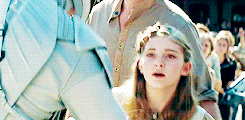
1. The Innocent
This is a character that represents purity and goodness. They are a light in the darkness, an incorruptible force that reminds the hero that there is still good in the world worth fighting for. Traditionally these characters are represented by women and children, though there are exceptions. Though they are often portrayed with a certain naivety, they are not lacking in understanding. Simply put they are merely too good for us mere "mortals". They also never lose their faith in humanity or optimism despite the horrors or unkindness they face.
Positives: Optimistic, enthusiastic, imaginative, pure
Negatives: Naive, too trusting, easily fooled, physically weak
Greatest Desire: To find peace and happiness.
Examples: Rue and Primrose from The Hunger Games, Dr. Reed from Criminal Minds, Matilda from Matilda, Tiny Tim from The Christmas Carole, Anne Shirley from Anne of Green Gables, and Beth March from Little Women

2. The Orphan
These characters embody the rags to riches struggle. Though they come from nothing, they manage to pull themselves up through the ranks of society to become success stories. They overcome an unimaginable amount of obstacles ranging from a lack of family, poverty, lack of social status, emotional issues, lack of education, and many many more. Through all their struggles they never lose hope and their determination towards their goal never wavers. They are willing to do and sacrifice anything necessary to achieve a higher status. Sometimes they are born with greatness in them and sometimes they have greatness thrust upon them, but most of the time it's something they achieve for themselves.
Positives: Survival instincts, empathy, determination, courage
Negatives: Ego, recklessness, ambition, confidence (either too much or too little)
Greatest Desire: To find love and acceptance/ to find their "family".
Examples: Annie, Harry Potter, Oliver Twist, Quasimodo, Jay Gatsby, Luke Skywalker, Frodo, and Bambi

3. The Hero
Everyone knows who this person is. They're usually the protagonist (though not all protagonists are heroes) and they're usually on a quest to right some kind of wrong. They stand up for what is right, no matter the consequences. They face all sorts of challenges and eventually face off against their arch nemesis. Historically, heroes in literature were only men, but that's changed in modern times, opening the door to all types of interesting and brave new leads! They are usually morally good, though their character is challenged repeatedly throughout their story. Their ability to rise to the challenge while still remaining true to themselves is part of what makes them heroic, the other half being they typically save people in need.
Positives: Courage, strength (phyiscal or mental), problem-solving skills, belief in themselves
Negatives: Spontaneity, overconfidence, ego, lack of planning
Greatest Desire: To save the day and prove their worth.
Examples: Harry Potter, Merlin, Katniss Everdeen, Hercules, Odysseus, Pocahontas, Moana, and Percy Jackson

4. The Caregiver
This is usually the person who sacrifices their own needs in order to help the people around them. They manifest in various forms. Sometimes they are parents, healers, teachers, siblings, lovers, mentors, or best friends. They do whatever they can to protect the people they love, no matter the cost. They vary rarely draw attention to themselves and for this reason they are usually supporting characters rather than main ones. They bring the warmth and heart to a story and help endear the protagonist to the readers.
Positives: Generosity, selflessness, compassion, listening skills
Negatives: Selflessness, they put other's needs above their own, lack of individuality, people-pleaser
Greatest Desire: To protect and help others.
Examples: Mary Poppins, Wendy Darling, Samwise Gamgee, Mrs. Doubtfire, Mrs. Potts, and Mrs. Weasley, Anna from Frozen, and Peeta Mellark
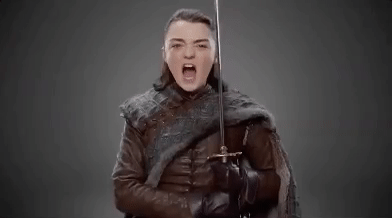
5. The Explorer
A free-spirited, spontaneous, and sometimes reckless individual, characters who fall into the explorer category are usually the ones doing crazy things like climbing mountains and fighting dragons. They are drawn to the excitement of exploring the unknown and live in the moment. They are always looking for their next adventure and feel restless when things stay the same. Their main goal in life is remain an individual while they're out pulling their next crazy stunt.
Positives: Passionate, free-spirited, adventurous, wanderlust
Negatives: Reckless, noncommittal, lack of loyalty, rule-breaker
Greatest Desire: To be free.
Examples: Peter Pan, John Smith, Indiana Jones, Jane Foster, Jane Porter, Arya Stark, Fantastic Four, and Will Turner

6. The Rebel
Rebels are the ones who aren't afraid to get their hands dirty. When it comes to championing their cause and fighting for what is right, there is no one better for the job. Overthrowing corrupt governments, defeating the bad guy, and getting justice are all on their daily to-do list. They can appear in multiple disguises from advocates, freedom fighters, musicians, to a random girl with dyed hair. No matter who they are, they challenge the existing system within their society and attempt to evoke change.
Positives: Ingenuity, advocate, quick-thinker, open-minded
Negatives: Lack of power/status/resources, makes enemies easily, confrontational, has trouble listening
Greatest Desire: To change the world around them.
Examples: Katniss Everdeen, Merida, Phoebe from Friends, Ferris Beuller, Triss, Rose Hathaway from Vampire Academy, John Bender from The Breakfast Club, and Tyrion Lannister

7. The Lover
Just like their title suggests, these characters are motivated by love and lust. Whether they have it, want it, or are struggling to keep it, they're willing to do whatever it takes to keep their dates for Valentine's Day. This ruthless pursuit often leads to comedic mistakes, embarrassing blunders, heartbreak, and sometimes even tragedies. They also are vulnerable to losing themselves along with their partners, as they tend to sacrifice everything (even their individuality) for their partners.
Positives: Passionate, loving, devoted, loyal
Negatives: Jealousy, envious, obsessional, lustful
Greatest Desire: To love and be loved.
Examples: Romeo and Juliet, Bella from Twilight, Ariel, Jack and Rose, Jaime Lannister, and Scarlett O'Hara
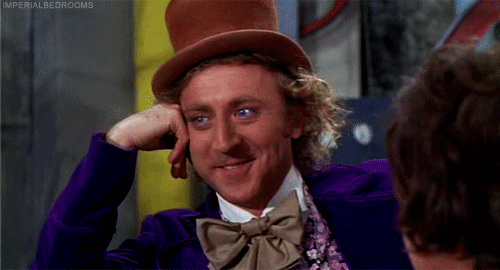
8. The Creator
An ambitious sort, their creativity and genius knows no bounds. Their need for perfection and glory to satisfy their monstrous egos drives them to create. Their primary goal is to build some sort of legacy that will bring them notoriety while leaving their mark on the world. These are the artists, politicians, architects, killers, and criminal masterminds.
Positives: Creative, ambitious, planner, above-average intelligence
Negatives: Perfectionist, ego, arrogance, never satisfied
Greatest Desire: To create a legacy.
Examples: Voldemort, Walter White, Don Draper from Mad Men, Willy Wonka, Remy from Ratatouille, Tony Soprano, Dr. Frankenstein, and Alexander Hamilton
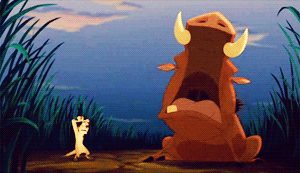
9. The Jester
Whether you call them jesters, jokers, fools, class clowns, or stoners, these are the comic relief characters. They don't take themselves or life too seriously. Some would argue that they don't take life seriously enough. They are often written into a story to lighten the mood, to poke fun at a tragic event, or to act as a cautionary tale. They show us that living in the moment can be both a good and a bad thing, depending on the day. They're fun to be around and usually have hearts of gold.
Positives: Humorous, always looks on the bright side, laid-back, can laugh at themselves
Negatives: Self-depricating, insecure, noncommital, doesn't take things seriously
Greatest Desire: To have fun and live in the moment.
Examples: Fred and George Weasley, Shaggy from Scooby Doo, Timon and Pumbaa, Tigger from Whinnie the Pooh, Megan from Bridesmaids, and Ted the Geek from Sixteen Candles

10. The Sage
The wisest characters of them all, these mentors help the hero along on their journey by gently guiding them with advice and anecdotes from their own experiences. They want to see their heroes succeed more than anything else, but they know that they can't do it alone. That's why they are always there to lend an ear, encourage them, or help save the day when their heroes think they can't go on.
Positives: Wise, experienced, patient, understands consequences, good listener
Negatives: Haunted, jaded, overly cautious, inability to act
Greatest Desires: To help others make sense of the world/to help their hero succeed.
Examples: Owl for Whinnie the Pooh, Gandalf, Professor Dumbledore, John Keating from Dead Poet's Society, Mr. Miyagi, Haku from Spirited Away, Grandmother Willow from Pocahontas, and The Fairy Godmother from Cinderella

11. The Magician
Similar to the Creators, Magicians seek to bring glory to their name through their pursuit of enlightenment and knowledge. They are driven by their need to master their universes and to quench their endless thirst for knowledge and the power it provides. It's not enough for them to know the secrets of the world, they must conquer them too. Thus they are drawn to forbidden magic, mysteries, murders, and the paranormal. They easily impress others with their showy personalities and superior intellectual abilities.
Positives: Ambitious, knowledgeable, intelligent, enlightened
Negatives: Glory/power-seeker, arrogant, prideful, self-serving
Greatest Desire: To be "masters" of the universe.
Examples: Sherlock Holmes, Will Graham from Hannibal, Saruman from The Lord of the Rings, Dr. Strange, Jay Gatsby, Thanos, The Wizard from The Wizard of Oz, and Voldemort
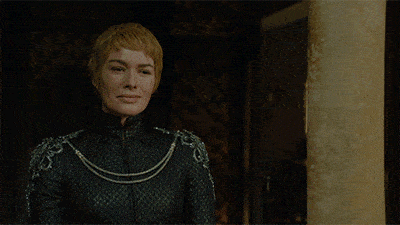
12. The Ruler
With great power comes great responsibility, something that the ruling class knows all too well. For these leaders it is all about balance... and not everyone lives up to public expectations. They deal with both internal and external pressures, a general lack of privacy, making daily choices that affect the greater good (and not to mention millions of lives), and sacrifice their personal identities for the crown. Their main desire is to keep their crown and power, but some rulers take it even further. Some are determined to conquer all and as a consequence lose the very thing they want most.
Positives: Leadership skills, charismatic, intelligent, excellent multi-tasker
Negatives: Paranoia, mistrusting, corrupted/controlled by lust for power, isolated
Greatest Desire: To be in control, to bring about order (their way, of course), and to remain in control.
Examples: Cersei Lannister, King Arthur, Daenerys Targaryen, The Red Queen from Alice in Wonderland, Aragorn from The Lord of the Rings, King Triton from The Little Mermaid, Zeus, and The White Witch
How do I use archetypes to make my story better?
Remember that archetypes are only a starting point. They are the molds through which you can shape your characters, but not the end product. You must make them realistic, unique, and believeable in order to make them stand out. There are several ways you can do this:
1. Give them unique defining features.
The best thing you can do to make sure that your characters stand out within your genre is to give them defining features that make them different. No one wants to read a story about a hero who is all brawn and no brains, or an innocent who is completely 100% perfect. Give them quirks you wouldn't expect that character type to have.
For example maybe your all-powerful control-freak Ruler who has hundreds slaughtered by day sleeps with a tiny little teddy bear at night. Maybe this is their prized possession and one day when it goes missing even more heads roll than usual. Have your Innocent be not-so-innocent. Sure, they are positive, young-in-age, and a little naive. But they have a deep, dark secret. They like to steal the most sentimental items that their friends own and then pretend to know nothing about its disappearance. For more on how to use this technique, see the post linked here.
2. Have them act out of character.
Another way to break your characters out of their archetypal molds, is by having them do specific actions that may be out-of-character for them. Have your Jester, for instance, suddenly want to assume a leadership position. Maybe they succeed, maybe they don't. But the point is that it's sure to accrue some interesting results along the way! Maybe your Sage has finally had enough of your Hero's blunddering and clumbsy interpretations of their cryptic advice. Today they decide that instead of letting the hero save the day, they are going to break out of their habit of observing and are going to take care of the job themselves. After all, sometimes the only person who can get something done right is to do it yourself!
3. Mix them.
Mixing and matching brings some interesting new combinations to play with. Your Hero could also be a Magician. Your Lover could also be your Ruler. Your Jester could also be your Sage. When you start interchanging the diffferent types the possibilities are infinite and the world your characters operate within gets a little bit bigger. This is where "gray" matter comes in. It allows you to explore morality, ethics, and the right/wrong of a complicated situation in which there are no truly definable answers.
For example, let's look at Tyrion Lannister from Game of Thrones. On the outside he is a Jester, someone to laugh at that no one takes seriously (even himself). But as we get to know him throughout the series, we see someone who is more than just their unseemly appearance. We see him as a Lover, as a Mentor, and as a Creator. He longs for the love of the prostitute Shae, he mentors Daenerys in how to rule, and he strives to create a new, more just kingdom, while also finding a way to build his legacy.
4. Change the specifics.
Lastly, change the specifics without changing the foundation. The Titanic is at it's core, a Romeo and Juliet story. Jack and Rose fulfill the roles of the star-crossed lovers from Verona. They can't be together because external forces are keeping them apart. They both suffer tremendously in the pursuit of love and meet a tragic end. Same story, different specifics. The specifics here are that social class and financial standing are the main issues keeping them apart, that they have to go against their loved ones, friends, and society to be together, and also that there's the overall issue of their ship sinking. It is fabulously different than the original Romeo and Juliet, however when you compare the two side-by-side you'll find that they share the exact same foundation.
The most useful aspect of archetypes is that it gives us as writers a glimpse into the heart of humanity. The universal values and experiences we all share connect us and make us who we are. As storytellers, we are striving to reflect that experience. By weaving these archetypes into your narrative you are adding the legacy of what we all share into your story, making it all the more relatable. So, go ahead. Build up your village. Your future audience will thank you for it.






Comments